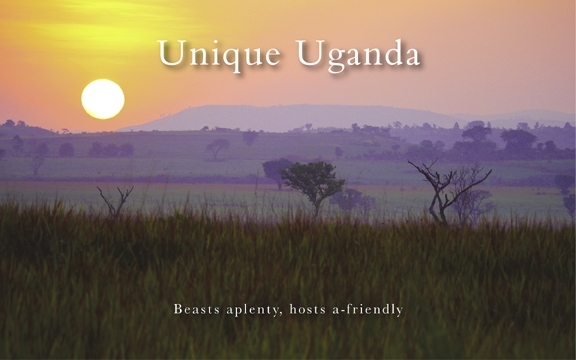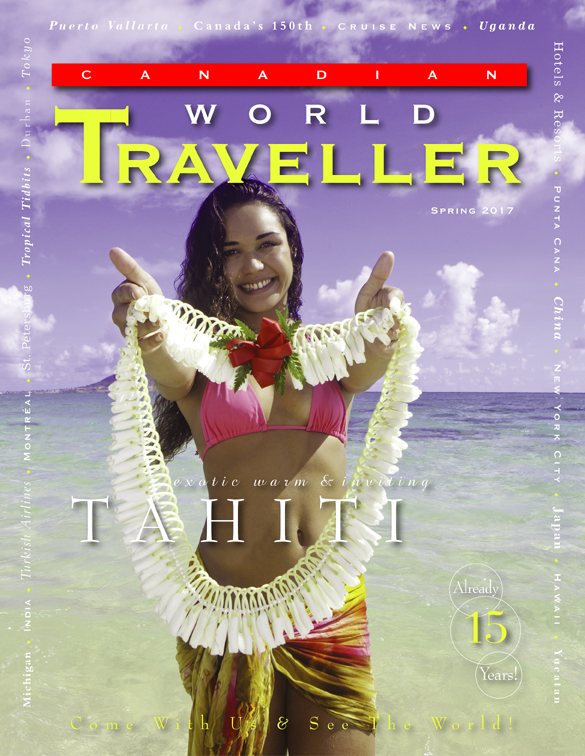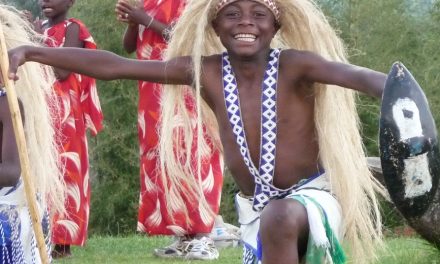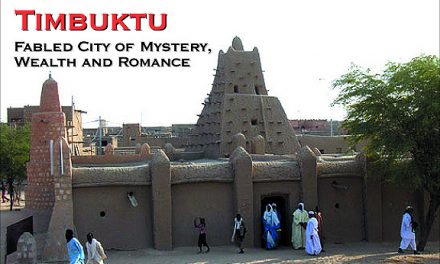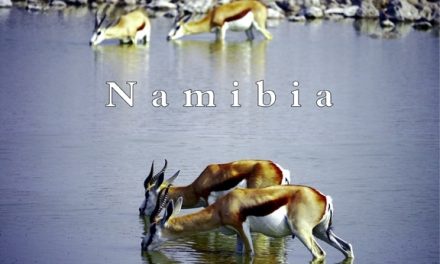Uganda
Unique Uganda: Beasts aplenty, hosts a-friendly
Article & Photography by Johanna Read, TravelEater.net

A warm light appears in front of me. I peek over my shoulder. The sun has just come up over the horizon. By the time I grab my camera and ask Steffie to stop the vehicle, the sliver of sun is a big yellow glowing ball in a bright orange sky. The sun rises quickly at the equator.
We click our cameras happily for several minutes. Having captured the equatorial sun ascending over the savanna, we are ready to search for Uganda’s animals.
We’re in Queen Elizabeth National Park, the most visited of Uganda’s ten national parks. Thanks to Wild Frontiers Uganda Safaris’ Senior Guide Mustafah (Steffie) Kiika’s knowledge and skill, our animal search is easy.
In the gorgeous morning light, we soon encounter hundreds of the country’s national antelope, the Uganda kob, as well as Cape buffalo, tapi, and Defassa waterbuck, all cordially posing for photos. Before the sun is high in the sky we see elephant, a vervet monkey clutching a 2-3 day old baby, snake eagle, hammercock birds, yellow wattled plover, an African fish eagle, and a pride of lion resting in some distant bushes.
During the heat of the day, we return to Kyambura Gorge Lodge for a delicious lunch on the terrace with Uganda’s Mountains of the Moon in the distance. I wish we had time to hike down into the gorge to see their resident chimpanzees and hippos. Instead we’re heading to one of the pearls of the Pearl of Africa: the Kazinga Channel. This natural 40 km / 25 mile long waterway connecting Lake Edward to Lake George provides a perfect water safari.
A cruise along the Kazinga Channel offers a unique opportunity to float close to mammals and dozens of species of water birds. The channel boasts the largest concentration of hippos on the continent. Notoriously cranky, these hippos don’t mind sharing the muddy shallows with herds of buffalo and, thankfully, ignore our boat.
We find elephant, crocodile, Uganda kob, waterbuck, baboon, colobus monkey, kingfisher, Egyptian goose, yellow billed stork, African skimmer and red throated bee eater. Lion, leopard and hyena can sometimes be seen too. As the sun sinks closer to the horizon, men from a channel-side village paddle canoes toward the open water of Lake George to fish. Many pause from their exertion to wave at our cameras.
Uganda’s other savanna national parks have an even wider range of animals, including giraffe, zebra, bat-eared fox, carcal, cheetah, and even rhino, which were extinct in the country as of 1997. Driving from Queen Elizabeth National Park to Bwindi National Park, lucky visitors can spot tree-climbing lions in Ishasha. There are only two places in the world — here and in Lake Manyara, Tanzania — that lions have adapted to lolling in trees. Thought to be a better way to stay cool and keep an eye on their surroundings, it provides a perfect photo op.
Gorillas in Bwindi Impenetrable Forest
Uganda is one of just three countries in the world where humans can see mountain gorillas. Not found in zoos, mountain gorillas live at altitude only in the rainforests of Uganda, Rwanda and the Democratic Republic of the Congo. Half of the world’s mountain gorilla population is in Uganda.
In Bwindi Impenetrable Forest National Park, a UNESCO World Heritage site, there are five families of gorillas habituated to humans. Seeing mountain gorillas in the wild is an experience of a lifetime.
We hike, largely uphill, on a wide path through the forest. Our group is accompanied by a police officer armed with an AK47 — just in case he needs to arrest a poacher or scare off an angry mountain elephant. After 45 minutes’ walk, John Tugumisirize, our ranger, informs us that the trackers have already found the family of gorillas we’ve been assigned. They’re just 15 minutes away. Cameras out and hearts pumping, we plunge into the forest, led by John and his machete clearing a path for us.
I catch a glimpse of something big and dark moving almost silently through the forest. We’ve found the gorillas! It’s lunchtime, and the family is grazing. For more than an hour we walk with the family of ten, taking photos when they pause to eat for a few minutes. A year-old baby eyes us curiously in between swinging from vines and rolling somersaults down the hill. Juveniles also show off — sliding down a vine like a fireman’s pole and hanging upside down from branches. The adults calmly munch leaves.
Those keen on primates can also trek to see Uganda’s chimpanzees, though encounters are not as close up as with the gorillas. Visitors have a 90% chance of seeing chimpanzees on a half-day tracking hike in Kibale Forest National Park.
Over 40 ethnic groups
Uganda has an incredibly rich cultural heritage, another reason it is the Pearl of Africa. One of the most ethnically diverse countries in the world, each of Uganda’s ethnic groups has its own language, customs and traditions. After seeing the mountain gorillas in Bwindi, be sure to book an excursion with one of these groups, the Batwa.
The Batwa (pejoratively called Pygmies), were forest-living hunter-gatherers. When the national parks to protect the gorillas were created, the Batwa were displaced. If they can find land, many have turned to subsistence farming. Many cannot. They face marginalization and systemic discrimination, and their culture is at risk.
A walking tour through a Batwa community gives visitors some insight into their culture. Batwa adults demonstrate hunting, fire-making, cooking, medicine, music, and dance, often joined by their children when not in school. Visitors can have an engaging experience with members of the community and know that their tour fee provides an essential contribution to the survival of the Batwa and their culture.
For further understanding of Uganda’s ethnic groups, be sure to book a dinner show at the Ndere Cultural Centre in Kampala. By far the best cultural dance show I’ve ever seen, the Ndere Troupe both entertains and educates. Changing monthly, their show features over 40 dances and songs. The performers’ talent, energy and strength are phenomenal.
Adventure activities, with a twist
As in many countries, Uganda offers a variety of adventure activities. They’re centered around the city of Jinja, about a two-hour drive from Kampala. However, in Uganda they have a twist.
Whitewater rafting is common in the mountainous regions of the world, but in Uganda adrenaline-seekers can whitewater raft down a section of the Nile River. Jinja also features bungee jumping — with the optional bonus of a head dunk into the Nile. Those wanting to get dusty can take a quad bike out for a riverside drive, enjoying the views of the world’s longest river. A short ziplining course is near Jinja, in the Mabira Forest canopy.
For a more sedate adventure, I recommend horseback riding with Nile Horseback Safaris. Unusually, riders meander through a village — even through the backyards of residents — to get a sense of everyday rural life. Naminya village toddlers gleefully wave and shout hello, and adults greet with a cheerful “good morning”. As we ride past the school, kids inside try hard to concentrate but sneak quick smiles at us through the normally distraction-free high windows. Experienced riders will want to book a multi-day safari and see parts of Uganda few other tourists get to, including the chance to see the rare grey-cheeked mangabey.
Jinja is also the source of the River Nile, identified in 1858 by John Hanning Speke. No trip to Uganda should be without a Nile cruise to see the underground spring water bubbling up on the surface at the entrance to Lake Victoria.
The friendliest nation
There is so much to see in Uganda, and Ugandans are thrilled to have visitors experience their country. Uganda received the highest marks for friendliness in a recent InterNations survey, and the BBC reports that “welcoming all nationalities is an intrinsic part of the [Ugandan] culture.”
I couldn’t agree more. When is your visit?
www.VisitUganda.com
Know before you go
Americans and Canadians need a visa to enter Uganda: a single-entry visa-on-arrival costs $50 US cash; an online East Africa visa for entry into Uganda, Rwanda and Kenya costs $100 US. Passports must be valid at least 6 months from the planned departure date from the region.
Certification for yellow fever vaccination is checked at the airport. All regular travel vaccinations are recommended, as is taking antimalarial medication. Treatment for bilharzia is advised if you enter lakes or rivers, particularly where the water is still.
The currency is the Uganda Shilling, which can be obtained by exchanging US dollars. US bills printed in the 1990s or earlier are not accepted. The best exchange rates are with small bills and in Kampala. Credit cards are accepted at most hotels and lodges but have a high transaction fee.
A tour operator can plan and implement the best itinerary to maximize your experience. Recommended: Sun Africa Expeditions, Shepherd Travel Solutions, and Wild Frontiers Uganda Safaris.
Click on cover to view published article

